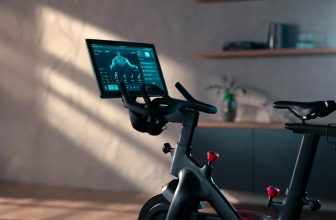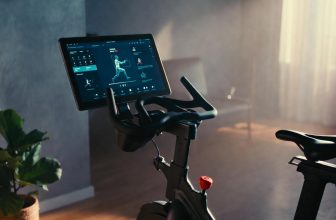Table of Contents
As an Amazon Associate, I earn from qualifying purchases.
What Size Peloton Shoes Should I Get?
What Size Peloton Shoes Should I Get? To determine your Peloton shoe size, measure your foot length in centimeters and compare it to the brand’s sizing chart, as Peloton shoes typically run true to size. For a precise fit, consider your foot width and whether you prefer a snug or slightly roomy fit, and always check user reviews for specific models.
Why Proper Peloton Shoe Sizing Matters
A well-fitted Peloton shoe enhances cycling efficiency, comfort, and safety. Ill-fitting shoes can cause discomfort, reduce power output, and increase injury risk. According to a 2020 study by the Journal of Sports Sciences, proper footwear fit improves pedaling efficiency by up to 10%. Peloton shoes, designed for clipping into Peloton bikes, require precise sizing to ensure secure attachment to Delta or SPD-compatible pedals.
Measuring Your Foot for Peloton Shoes
Accurate foot measurement is the first step to finding the right size. Follow these steps:
- Trace Your Foot: Place your foot on a piece of paper, wearing the socks you’ll use for cycling. Trace the outline.
- Measure Length: Use a ruler to measure from the heel to the longest toe in centimeters.
- Measure Width: Measure the widest part of your foot to determine if you need a standard or wide size.
- Compare to Sizing Chart: Refer to Peloton’s official sizing chart, which converts US, EU, and UK sizes to foot length in centimeters.
Peloton shoes align with European sizing standards. For example, a US men’s size 9 typically corresponds to an EU 42, fitting a foot length of about 27 cm. If you’re between sizes, opt for the larger size to avoid cramped toes during long rides.
For additional guidance on measuring your foot, check out Shimano’s bike shoe fitting guide for detailed tips on achieving a precise fit.
Understanding Peloton Shoe Sizing
Peloton offers its own branded cycling shoes, but other compatible brands like Shimano, Nike, and Tommaso are popular. Sizing varies slightly across brands:
- Peloton Shoes: Run true to size but may feel snug for wide feet. Reviews suggest sizing up if you prefer extra room.
- Shimano RC1: Lightweight and breathable, these run true to size but require separate Delta clips. Tom’s Guide rated them the best overall for Peloton in 2025.
- Nike SuperRep: Often runs small; users recommend sizing up by half a size for comfort.
- Tommaso Pista/Strada: Slightly roomier, ideal for wider feet, and compatible with both Delta and SPD clips.
| Brand | Sizing Tip | Clip Compatibility | Best For |
|---|---|---|---|
| Peloton | True to size, snug for wide feet | Delta | Peloton bike users |
| Shimano RC1 | True to size | Delta (purchased separately) | Budget-conscious riders |
| Nike SuperRep | Size up half a size | Delta | Style-focused cyclists |
| Tommaso Pista | Roomier fit | Delta & SPD | Wide feet, versatility |
Factors Influencing Peloton Shoe Fit
Several factors affect how Peloton shoes should fit:
- Foot Shape: Narrow, standard, or wide feet impact fit. Peloton and Nike shoes may feel tight for wider feet, while Tommaso offers more room.
- Sock Thickness: Thicker socks require slightly larger shoes to prevent constriction.
- Ride Duration: Feet swell slightly during long rides, so a snug-but-not-tight fit is ideal.
- Cleat Positioning: Proper cleat alignment, which depends on shoe size, enhances pedaling efficiency and reduces knee strain.
A 2023 survey by Cycling Weekly found that 65% of indoor cyclists experienced discomfort from poorly fitted shoes, emphasizing the need for precise sizing.
Tips for Choosing the Right Size
- Try Before Buying: If possible, visit a Peloton showroom or retailer to try on shoes.
- Read User Reviews: Check feedback on sizing for specific models. For instance, Tom’s Guide notes Nike SuperRep shoes may lack sufficient arch support for some users.
- Consider Wide Options: Brands like Shimano offer wide sizes for better comfort.
- Check Return Policies: Ensure the retailer allows returns or exchanges for sizing issues.
For more insights on cycling shoe fit, visit Cycling Weekly’s guide to bike shoe sizing for expert advice tailored to indoor cycling.
Common Sizing Mistakes to Avoid
- Ignoring Width: Choosing a standard size for wide feet leads to discomfort.
- Not Measuring Both Feet: One foot may be slightly larger; always measure both and size for the larger foot.
- Overlooking Brand Differences: Assuming all brands follow the same sizing chart can result in a poor fit.
- Buying Without Cleats in Mind: Ensure the shoe size accommodates proper cleat installation for your Peloton bike.
FAQ
Q: Should I size up or down for Peloton shoes?
A: Peloton shoes typically run true to size, but size up if you’re between sizes or have wide feet for added comfort.
Q: Can I use regular athletic shoes for Peloton?
A: No, regular athletic shoes lack cleats for clipping into Peloton pedals. Cycling-specific shoes are required for safety and efficiency.
Q: How do I know if my Peloton shoes fit correctly?
A: The shoes should feel snug without pinching, with about a thumb’s width of space at the toe. Your heel should stay secure without slipping.
Q: Are Peloton shoes compatible with other bikes?
A: Yes, Peloton shoes use Delta clips, compatible with most indoor cycling bikes, but confirm your bike’s pedal type (e.g., SPD or Delta).
Final Thoughts
Choosing the right Peloton shoe size requires careful measurement, consideration of foot shape, and attention to brand-specific sizing nuances. By following the steps outlined—measuring your foot, consulting sizing charts, and reviewing user feedback—you can ensure a comfortable and efficient ride. Investing time in selecting the correct size enhances your Peloton experience, reduces discomfort, and boosts performance. Always prioritize fit over aesthetics and leverage high-quality resources like sizing guides from trusted brands to make an informed decision.







